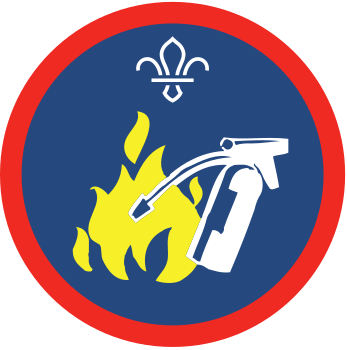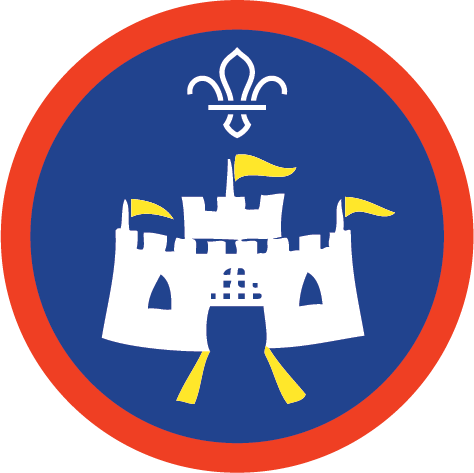Fire finders
You’ll need
- Pens or pencils
- Scrap paper
- Access to the internet
Before you begin
- If you don’t have access to the internet (to use street view software), print off some pictures of familiar streets and buildings in your local area (for example, your meeting place, a few shops, or a local school or two) or famous locations.
Learn what to do
- The person leading the activity should ask if anyone’s called 999 before. What were they asked? If no one’s called 999, does anyone know what happens when someone calls 999?
- The person leading the game should help everyone understand what happens when someone calls 999. Depending on how much they already know, they may need to explain lots, or people may be able to explain to their friends.
Set up scenarios
- Everyone should split into small groups (between four and six people is about right). The groups should be mixed – make sure at least some people are familiar with the local area.
- Each group should split in half – half will be the callers, half will be the control team. They’ll switch round so everyone gets a turn at both roles, so it doesn’t matter too much who does what first.
- At the other end of the space (or in a different room), the person leading the activity should set up a device so street view shows the familiar location for the fictional fire.
Get guessing
- The first caller from each team should go to the device. They should spend 30 seconds looking at the location, taking in as much information as possible.
- The caller should return to their control team and tell them what they’ve seen in as much detail as possible (without saying the place name).
- The control team should listen carefully to the caller and try to figure out the location from the description. They may want to jot down notes on some paper, or even use a map to confirm any guesses.
- All of the callers should take it in turns to go to the location of the fictional fire, gather as much information as they can, and relay it to the control team.
- Once all of the callers have visited the location, the control team write down where they think the fire is.
- Each team should read out their guess, and the person leading the activity should reveal the real location. Any team that guessed right (or was really close) gets a point.
- The callers and control team should swap rolls. The person leading the game should choose a new location, and everyone should play again.
- An operator will ask which service you require (fire and rescue, ambulance, police, or coastguard). If it’s the fire service, you’ll be put through to a fire control room.
- An operator will ask for the location of address of a fire. The best thing to give them is a postcode, but if you can’t do that then the road name or the name of a nearby landmark will still help. As soon as they know the location, they’ll send a fire engine.
- As the fire engine makes its way to the emergency, the operator will ask more questions so they can pass important information on to the fire crew. They’ll ask what the situation is, and whether there’s anyone still inside the building (or trapped inside). Depending on the situation, you may not know – the important thing is to call and raise the alarm, then tell the operator what you do know, even if it’s not much.
- The operator will stay on the line for as long as they need to; they’ll give people help and advice until the fire engine arrives.
- Calling the fire service as fast as you can (and telling them everything you know about the situation) will help them arrive as quickly as possible, put the fire out, and save anyone who needs help.
- Always get out and stay out of a burning building. Never go back in until the fire service has told you it’s safe to do so.
Reflection
This activity was all about communication. How easy was it to describe the location? What were the most useful pieces of information to give to the control team? Knowing where you’re going (and telling others where you’ll be) is an important part of staying safe – it’s important in case you need help. How could people practise this in their everyday lives? Perhaps they could practise looking around for road signs and landmarks they’d use to describe their location.
Safety
All activities must be safely managed. You must complete a thorough risk assessment and take appropriate steps to reduce risk. Use the safety checklist to help you plan and risk assess your activity. Always get approval for the activity, and have suitable supervision and an InTouch process.
- Online safety
Supervise young people when they’re online and give them advice about staying safe. Take a look at our online safety or bullying guidance. The NSPCC offers more advice and guidance, too. If you want to know more about specific social networks and games, Childnet has information and safety tips for apps. You can also report anything that’s worried you online to the Child Exploitation and Online Protection Command. As always, if you’ve got concerns about a young person’s welfare, including their online experiences, follow the Yellow Card to make a report.
It’s up to you whether you stick to places in your local area or include famous national landmarks.
You could challenge teams to use what3words to share their guesses. Make sure everyone knows how to use the app, and that our local fire service are happy receiving locations with what3words before you tell people about it.
For an extra challenge, why not try the same GeoGuessr?
If you can’t make voice calls, you can contact 999 emergency services by SMS text. You need to sign up first – check out the instructions on the London Fire Brigade’s website.
Being in a real fire can be traumatic. Before you start this activity, think about if anyone’s ever experienced a real fire – you may want to give people the chance to let you know if they’re not comfortable taking part (or if you need to avoid a particular scenario, or make other adjustments such as having a safe space to retreat to). Everyone should know that they can stop at any time if they don’t want to carry on.
This activity’s about learning the skills to be safe in the unlikely event of a fire. People should leave feeling empowered and confident, not anxious or scared. Make sure you have time to chat at the end.
All Scout activities should be inclusive and accessible.
Why not use the what3words app to plan a scavenger hunt using geocaches?

